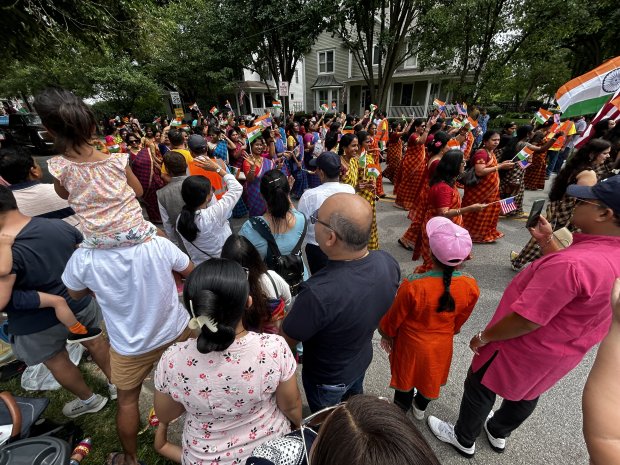It was a few months back when I took note of a black and white movie airing on the Turner Classic Movie channel that my parents were watching after supper.
The title of the 1941 flick from RKO Pictures, directed by Howard Hawks, which had my mom and dad so entranced is “Ball of Fire” starring Gary Cooper and Barbara Stanwyck.
Loosely drawing its plot in homage to Walt Disney’s “Snow White and the Seven Dwarfs,” the movie cast Stanwyck as a nightclub singer and Cooper playing one of eight awkwardly withdrawn academics, all college professors with specialties of study who live together in New York as they work on writing the ultimate “encyclopedia of human knowledge.”
Cooper’s identity is that of Professor Bertram Potts, whose specialty is grammar. He invites Stanwyck’s singer character to live in the household of academics so he can study her use of popular slang, which was a familiar language of the 1940s.
While watching the movie with my parents, my mother brought to our attention that the other star of the movie is gum-chewing drummer Gene Krupa, who plays himself in scenes working the nightclub stages with Stanwyck.
I recalled that Krupa, a favorite bandleader who appeared on Ed Sullivan’s Sunday night CBS variety show, was Polish and ranks as one of our region’s entertainment claims-to-fame. His final resting place is in Holy Cross Cemetery in Calumet City.
Krupa, a native of Chicago’s south side, got his start drumming in Benny Goodman’s orchestra. When Universal Pictures produced the feature film “The Benny Goodman Story” in 1956 starring Steve Allen in the title role and Donna Reed as his wife, Krupa was again cast as himself playing his own drumming identity. Rival bandleader Harry James also played himself in the film. Goodman, who like Krupa was also from Chicago, opted not to play himself in the film.
Goodman attended Krupa’s funeral and kept an active performing career until his death at age 77 in 1986.
When Krupa appears opposite Stanwyck in a nightclub scene in “Ball of Fire,” he has a memorable moment when he plays a tiny box of matches like a drummer using two of the wooden matchsticks as tiny drumsticks.
One of Krupa’s biggest hits is still the familiar “Sing, Sing, Sing (With a Swing).” The 1936 song, with music and lyrics by Louis Prima, who first recorded it with the New Orleans Gang, was released by Brunswick Records on Feb. 28, 1936.
It was the following year, on July 6, 1937, when Krupa on drums recorded “Sing, Sing, Sing” in Hollywood as a shared hit with Benny Goodman on clarinet; Harry James, Ziggy Elman, and Chris Griffin on trumpets; Red Ballard and Murray McEachern on trombones; Hymie Schertzer and George Koenig on alto saxophones; Art Rollini and Vido Musso on tenor saxophone; Jess Stacy on piano; Allan Reuss on guitar; and Harry Goodman on bass.
Krupa sometimes made headlines for his unpredictable behavior, including three marriages, divorces and a 1943 arrest after his concert in San Francisco for “possession of marijuana” and “contributing to the delinquency of a minor,” the latter being a 17-year-old boy who was a member of his band.
Andrew Cierny, who has been a permanent drummer fixture with the Northwest Indiana Symphony since 2015, and a regular contributor since 2001, mentioned Krupa’s legacy to me last month.
“There have been many famous percussionists throughout the decades, including Gene Krupa, Buddy Rich and Ringo Starr,” Cierny said.
“These are the names who have served as inspirations to myself and so many others.”
Others who earned fame behind drum skins include Mel Torme, Desi Arnaz and even Karen Carpenter, the latter who earned out-front singing fame opposite her brother Richard on piano as the sibling pop stars The Carpenters.
Rick Kubic of Highland, radio personality and drummer for the 1990s band Madder Rose, was born and raised on the southeast side of Chicago and has often visited Krupa’s final resting place in Holy Cross Cemetery in Calumet City. There are usually pairs of drumsticks planted next to the modest tombstone where Krupa was laid to rest at age 64 in 1973 after his death of heart ailments and leukemia.
He is buried next to his parents and his first wife Ethel, who he married in 1933 and divorced in 1942 and then remarried in 1946 until her death at age 47 in 1955. Krupa had two adopted children, daughter Mary Grace, and son Gene Michael Krupa, with his second wife Patricia, the family trio also being among the more than 450 mourners who attended his funeral mass in Yonkers, New York before the body was brought to Chicago for a second funeral mass at Immaculate Conception Catholic Church, 88th St. and Commercial Avenue before burial at Holy Cross Cemetery.
“Big-time drummer Gene Krupa’s grave is not far from my parents’ graves at Holy Cross Cemetery in Calumet City,” Kubic said.
“He was one who inspired me to play at the age of 6 years old.”
Philip Potempa is a journalist, published author and the director of marketing at Theatre at the Center. He can be reached at pmpotempa@comhs.org.



